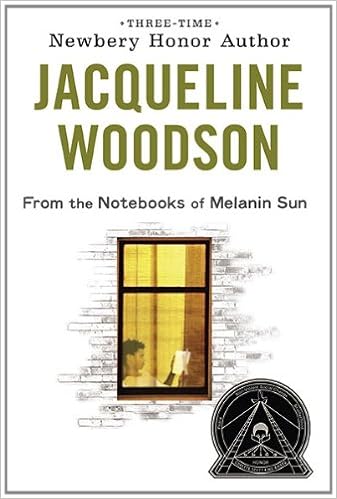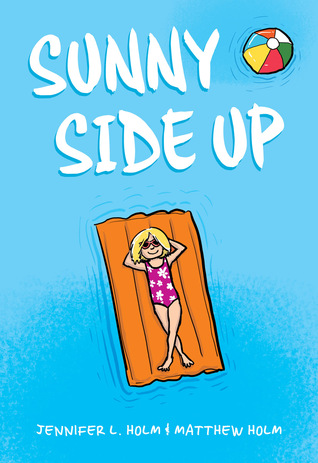The children know.
They have always known.
But we choose to think otherwise: it hurts to know the children know.
If we obfuscate, they will not see.
Thus we conspire to keep them from knowing and seeing.
And if we insist, then the children, to please us, will make believe they do not know, they do not see.
They are remarkable – patient, loving, and all-forgiving.
It is a sad comedy: the children knowing and pretending they don’t know to protect us from knowing they know.
— Maurice Sendak, preface to ‘I Dream of Peace’ (UNICEF, HarperCollins, l994)
Mr. Sendak was talking about the hard truths of our world, from which—if we are from a relatively peaceful time, region, or culture—we may be privileged enough to attempt to shelter our children. He was speaking about death and loss, grief and war, and the other major subjects of life we don’t want to visit upon our children before they’ve had a chance to have a few years free from worry. Except.
As we know from our own childhoods, for most of us, that time of unfettered innocence is a myth. Even in the steadiest of conditions and in the homes of the most even-keeled of families, children are exposed (via the news, the internet, the schoolyard, family friends, older siblings, cousins, etcetera and so on ad nauseum) to confusing, intriguing, worrisome, sad, mysterious truths that they wonder about and try to make sense of. They are aware of violence and drugs and smoking and drinking and sex far earlier than we like to tell ourselves they are, and along with the snippets of what they actually understand are vast and unpredictable fields of oddly filled-in blanks, misperceptions, and missing contexts. They know and they don’t know. We KNOW this. We just don’t want to know it.
But books can be safe conductors for children and teens, providing them insight, compassion, wisdom, humor, humanity and commonality in the face of big life. They can, as we know, serve as both windows and mirrors for readers, and for a child who is already experiencing some big struggles, encountering a kindred character can literally be a life-saver.
Books are also a handy way for parents to invite questions and conversations, another way to share their own values with their children. This is why I am always surprised by the amnesia of adults, and the fear that makes them (us) shrink back from considering the gift of books that allow young people to encounter experiences beyond their own, that allow them to travel down roads navigating choices, and to see—from a safe perspective—how other hearts and minds make choices, and deal with the consequences of new or scary or intense experiences.
I am no proponent of traumatizing children with reading that will haunt them. The right book at the right time is a wonderful thing, and there are scads of resources out there—reviews, teachers, librarians, booksellers, friends, and reading the book oneself, for crying out loud—to help with the choosing. And happily, children’s and YA authors have made their life’s work a study of communicating thoughtfully and sensitively and humorously with kids through the written word, so the great books out there can be trusted—not to mention again, pre-read by concerned adults.
Banning books often undermines the very goals of the censors; it usually doesn’t shield the children from anything except an opportunity to understand the world and themselves a little better, and to think about the choices they themselves might make, similarly or differently, in the face of similar circumstances. What a luxurious and lucky way to encounter the challenging aspects of life.
Of course, parents have the right to decide what books come into their homes and even what books their kids can and can’t read in the classroom, if they have religious beliefs that preclude certain kinds of materials. But one’s own restrictions cannot be visited upon other people’s children.
Even parents who think of themselves as broadly open about their children’s reading sometimes make surprising decisions about their children’s reading. I have always been fascinated by the fact that some parents who come into my bookstore are completely unfazed by their children reading books filled with violence, body counts, and casual or calculated cruelty, but are deeply uncomfortable when a book acknowledges differences in privilege and access, or includes a character who is struggling with a real-life problem, no matter how gracefully and perceptively written about. These parents are often the same ones who freak out at the mere suggestion in a book that two teens are doing more than holding hands.
Authors like Jason Reynolds and Kate Messner and Jacqueline Woodson and Zetta Elliott and Jennifer Holm and Tanya Lee Stone—and so many other wonderful authors whose works touch on topics that are lightning rods for school bannings—address real-life issues with sensitivity and the grace of a light hand on deep truth, understanding that children don’t need to be traumatized or shocked in order to see the broad range of human life truly and lovingly represented. Their books feature fully rounded characters and a range of human emotion, rather than reducing people’s identity to their primary struggle and creating simplistic solutions that bear little resemblance to real life.






Two years ago, middle-grade author Kate Messner was uninvited from a school visit in my own state because her book, The Seventh Wish, addresses the truth that some problems, like a sibling’s addiction, might be too big to fix just by wishing. It was a terrible loss to that school community that Kate—who couldn’t be a more inspiring influence for kids—was banned from that school. (Nota bene: more kids probably read that book than otherwise might have; that’s another frequent unintended consequence of banning.)
This week, I was surprised to learn that Vermont author Tanya Lee Stone’s 2006 novel, A Bad Boy Can Be Good for a Girl, was removed from a high school library by the school board even AFTER the initial ban attempt was overturned. It’s a novel in verse that tells the story of three girls who are involved (serially, not polyamorously) with the same guy, a good-looking charmer who turns out to be a player. The girls differ in confidence levels, expectations, past experiences, and desires, and they all handle their doomed relationships differently. They respond to the boy’s sexual overtures with varying levels of enthusiasm, resistance, and regret — and all three find a very satisfying way to reclaim their own power and senses of self. Like Laurie Halse Anderson’s Speak, it’s a great book for teens: part cautionary tale, part girl-power anthem. It’s difficult to believe a high school would ban it. Sadly but truly, teenagers are encountering these pressures and choices long before high school nowadays. Isn’t it valuable to help them assess potential relationships and just maybe, possibly, avoid a few of the stumbles, humiliations, and pitfalls of being a teenager? Weren’t we, as youth ourselves, wildly grateful to Judy Blume for giving us a window into the things—puberty, sex—that we had to protect grownups from knowing that we knew (or were wondering about)?
Tanya wrote about the banning,
It’s a troubling story at a turbulent time in our nation’s history. Tanya’s editor, Wendy Lamb, wrote a statement in support of the book:
“A Bad Boy Can Be Good for a Girl is an honest and sympathetic portrayal of high school life, and what can happen when girls face pressure to have sex. Now, when the #MeToo movement has exposed the prevalence of sexual harassment, and women’s anger at harassment, A Bad Boy Can Be Good for a Girl is more significant than ever. Readers discover that the book is about much more than sex—it’s also about being self-aware, standing up for yourself, confidence, and the importance of friendship and real love. This book sparks discussion about vital issues; among them, sex versus love, and the emotional pitfalls of having sex before you are ready. Our hope is that readers will feel empowered by the book, and that it will help prepare them to make the right decisions.
“Parents have the right to forbid their children from reading a book. But they do not have the right to forbid others from reading it. Young readers need to know the truth.”
And the truth is that young readers know some things about this world, and the best we can do is to try to help them understand and navigate that world as healthily and buoyantly as possible. I think we have some amazing guides in our literary world who can help with that task, and I hope we booksellers and librarians and teachers and parents can find the right books at the right time for those young readers.

you go, girl
Stats show earlier entry into puberty by girls and later entry by boys, leaving the girls vunerable to older ‘player’ type boys, among other problems. The info if not distributed come from that player or older girls less able to deliver what needs to be understood. The age of sexual activity has lowered the barriers lowered too, It may be one reason that some areas are trying to elimitae ‘Middle School’ which isolates the kids creating a nightmare of student hierarchy battles particularily in co-ed settings. any administrator bowing to parental pressure to bar books lie this should lose their job, and be unable to get a similar unless they first sit with some student counselors during sessions with these kids. The parents have NO clue. Ask them where they get their information, where they can document whatever they are alleging about the consumption of books and then ask them how they think they control their kids consumption. They are all living in a dream world. It alway explodes if the kid reaches college.